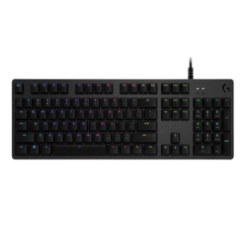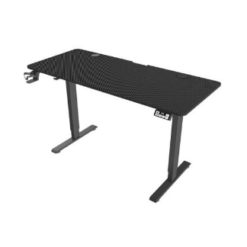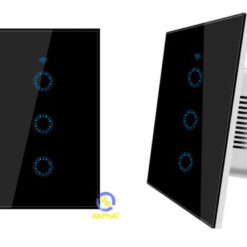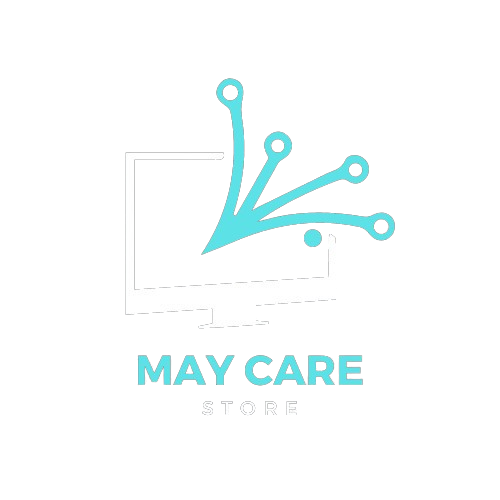
The payable is essentially a short-term IOU from one business to another business or entity. The other party would record the transaction as an increase to its accounts receivable in the same https://www.online-accounting.net/debits-and-credits-debit-vs-credit-bookkeeping/ amount. Keeping accurate logs of expenses and owed payments of all kinds is important to any business’s spend management process, as well as their specific spend management strategy.
In this example, there is a 6% interest rate, which is paid quarterly to the bank. Vendors and suppliers raise invoices according to their billing cycles with your business. These invoices need to be paid off before the due date in order to ensure that you don’t pay a late payment fee. A payable is created any time money is owed by a firm for services rendered or products provided average total assets that has not yet been paid for by the firm. This can be from a purchase from a vendor on credit, or a subscription or installment payment that is due after goods or services have been received. Another, less common usage of “AP,” refers to the business department or division that is responsible for making payments owed by the company to suppliers and other creditors.
The following is an example of notes payable and the corresponding interest, and how each is recorded as a journal entry. Of course, you will need to be using double-entry accounting in order to record the loan properly. However, notes payable on a balance sheet can be found in either current liabilities or long-term liabilities, depending on whether the balance is due within one year. Accounts payable is always found under current liabilities on your balance sheet, along with other short-term liabilities such as credit card payments.
Payment processing
Some people mistakenly believe that accounts payable refer to the routine expenses of a company’s core operations, however, that is an incorrect interpretation of the term. Expenses are found on the firm’s income statement, while payables are booked as a liability on the balance sheet. Receivables represent funds owed to the firm for services rendered and are booked as an asset. Accounts payable, on the other hand, represent funds that the firm owes to others and are considered a type of accrual. Although some people use the phrases “accounts payable” and “trade payables” interchangeably, the phrases refer to similar but slightly different situations. Trade payables constitute the money a company owes its vendors for inventory-related goods, such as business supplies or materials that are part of the inventory.
AP automation software helps growing organizations get a handle on an often messy and stressful accounts payable process. Manually inputting data from each invoice leaves a lot of room for error, some that can be caught and corrected, and some that are far more difficult to go back and fix. Automation software eliminates the need for manually inputting invoices during the P2P process, increases data transparency, makes auditing easier, and even adds a layer of fraud protection. Invoice approval can extend to weeks when paper invoices are mailed to a remote location, then forwarded to accounts payable for processing.

Accounts payable represents the money you owe to vendors, suppliers, and other creditors. Your accounts payable balance is considered a short-term debt or current liability and appears as such on your balance sheet. Notes payable represent liabilities owed to financial institutions captured in the form of formal promissory notes. A notes payable is effectively a loan agreement, containing information related to payment deadlines and interest rates.
Notes Payable vs. Accounts Payable: The Differences Explained
Today, with an automated solution, anyone on the AP staff could easily schedule payments in different methods, countries, and currencies without jumping to different applications or platforms. Equally important, you can deliver valuable remittance information with these payments to simplify the reconciliation process for your trading partners. A three-way match occurs when a goods receipt is involved and linked to the purchase order and invoice.
- Taken together, the power of matching from electronic invoicing helps accounts payable turn invoices around fast enough to meet payment terms, such as 30 days to pay upon receipt of invoice.
- This would be classified as accounts payable, a financial obligation from services rendered on credit.
- It approaches a bank and takes out a $50,000 loan, agreeing to repay it with interest over three years.
- A promissory note can be issued by the business receiving the loan or by a financial institution such as a bank.
- A promissory note may also indicate whether there is a provision for late payment fees and whether the loan is secure or unsecured.
For the past 52 years, Harold Averkamp (CPA, MBA) has worked as an accounting supervisor, manager, consultant, university instructor, and innovator in teaching accounting online.
What is the difference between Notes Payable and Accounts Payable?
Early on, the account payable team may also be responsible for managing accounts receivable, which manages the income that a company generates from the sales of goods and services. Continued growth will lead to the segmentation of accounts payable and accounts receivable, with dedicated resources assigned to each accounting specialty. A software company hires a marketing agency on a six-month contract, agreeing to pay the agency $30,000 at the end of the contract period. At the end of the contract, the software company is obligated to pay the marketing agency.
How Are Payables Different From Accounts Receivable?
Both accounts payable and notes payable share the common aspect of being payable in nature, meaning they involve debts that a company must pay to settle its obligations. The good news is that your teams don’t have to handle accounts payable manually. MHC offers a comprehensive procure-to-pay solution that makes it easy for accounting departments to streamline their AP processes. With features like OCR technology and automated invoice routing, MHC eliminates errors that stem from manual data entry and reduces bottlenecks that crop up in the invoice approval process, saving you time and money.
In this case, the Bank of Anycity Loan, an equipment loan, and another bank loan are all classified as long-term liabilities, indicating that they are not due within a year. This promissory note would contain the details of the repayment of the leftover balance payment due to the creditor. Using no-code platforms like Hubler, your business can design custom software to automate invoice approvals with predetermined protocol and matching criteria to streamline this process. Another complexity that accounts payable must deal with is the responsibility of matching the invoice with the goods and services received.
As explained earlier, notes payable involve the payment of money owed to a financial institution or other creditors. They involve the payment of principal and interest and are generally longer-term payment commitments (greater than one year). In closing, the accurate recording and management of accounts payable and notes payable are vital components of a successful financial strategy. Ensuring proper handling of these two aspects will contribute to a company’s overall financial health and stability, benefiting both the company and its stakeholders. For day-to-day business operations, it is necessary to ensure there is enough availability of working capital. It increases the complications when there is a large volume of accounts payable entries to be managed.
Related
 Ghế Corsair TC200 Leatherette Black/Black
1 × 6.790.000 đ
Ghế Corsair TC200 Leatherette Black/Black
1 × 6.790.000 đ  Chuột Logitech G Pro X Superlight Wireless Red
1 × 2.990.000 đ
Chuột Logitech G Pro X Superlight Wireless Red
1 × 2.990.000 đ  Bàn phím Logitech G512 GX RGB Tactile
1 × 2.090.000 đ
Bàn phím Logitech G512 GX RGB Tactile
1 × 2.090.000 đ  Laptop gaming Dell G15 5530 i7H165W11GR4050
1 × 37.990.000 đ
Laptop gaming Dell G15 5530 i7H165W11GR4050
1 × 37.990.000 đ  Laptop gaming ASUS TUF A15 FA507NU LP031W
1 × 25.990.000 đ
Laptop gaming ASUS TUF A15 FA507NU LP031W
1 × 25.990.000 đ  Bàn nâng hạ WARRIOR WGT606 Pro Black
1 × 4.490.000 đ
Bàn nâng hạ WARRIOR WGT606 Pro Black
1 × 4.490.000 đ  Công tắc Wifi Bình Nóng Lạnh APCsmart dành cho nhà thông minh SmartHome
1 × 299.000 đ
Công tắc Wifi Bình Nóng Lạnh APCsmart dành cho nhà thông minh SmartHome
1 × 299.000 đ 



